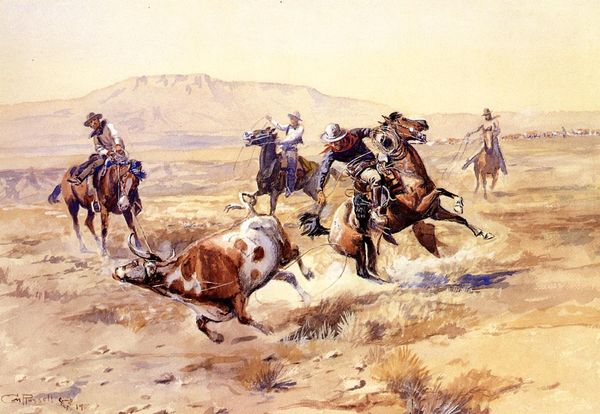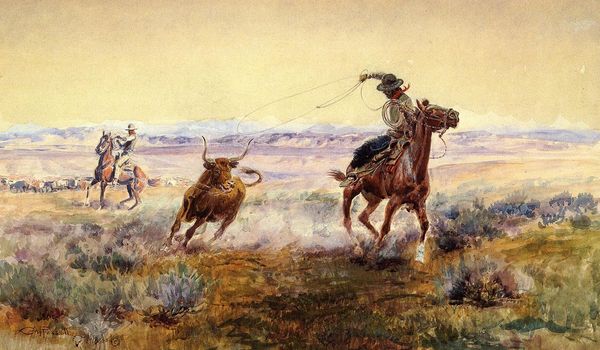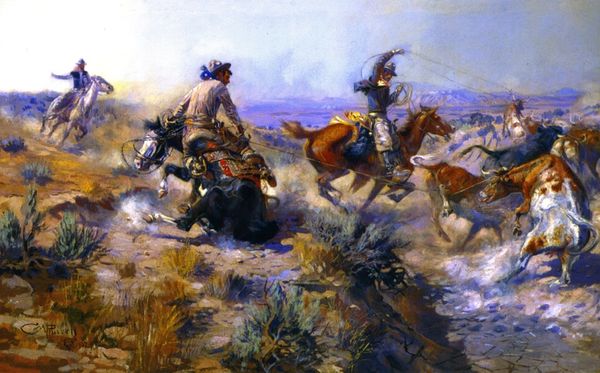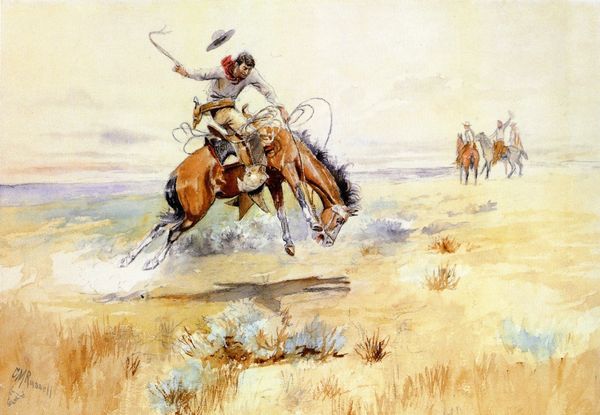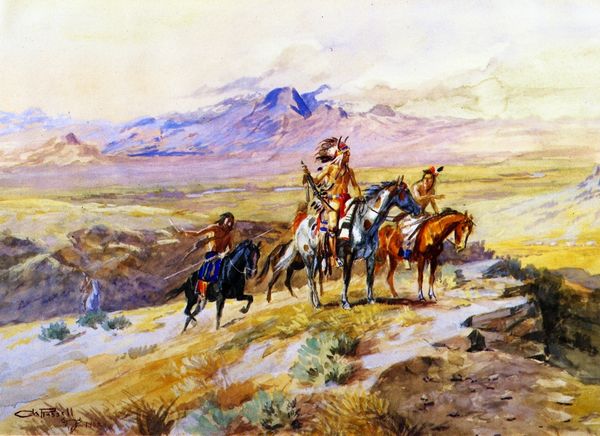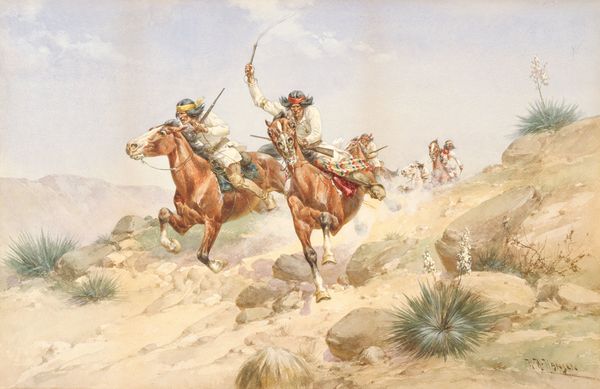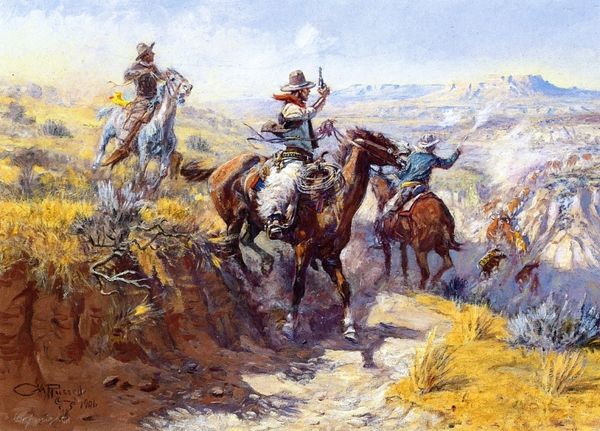
Copyright: Public domain
Editor: So this is Charles Russell’s "The Herd Quitter," painted in 1902. I’m struck by how much raw energy there is. It’s more than just cowboys chasing a steer; there's a sense of a real, almost desperate struggle unfolding in that landscape. What do you see in it? Curator: The drama you sense is key. This isn't simply a depiction of a roundup, it's a drama about independence versus conformity. The "quitter" – the steer – embodies the individual spirit that chafes against the herd. Consider the visual weight. Editor: You mean how the steer seems to dominate the foreground? Curator: Precisely. And note the body language of the cowboys; they are angled and leaning towards the steer, but its gaze is averted, pulling us, and them, into the unknown. This also resonates with Romanticism, a belief in the primacy of individual experience versus collective control. This steer represents a potent, and perhaps threatening, force. Think about it—what qualities were most prized during westward expansion? Editor: Rugged individualism, self-reliance...going against the grain. Curator: Exactly. But what happens when individualism disrupts order? Russell presents us with that tension, visually. How might that relate to the psychological landscape, then? Editor: I guess it’s a symbol of breaking free, even when everyone else is trying to pull you back. That struggle feels timeless. Curator: It is indeed, isn't it? Russell has captured not just a moment in the West, but an enduring struggle between individual freedom and the pressures of conformity, rendered in symbols that still speak to us today. Editor: That tension makes the painting way more complex. I see that now; thanks for shedding light on all the hidden meanings in plain sight!
Comments
No comments
Be the first to comment and join the conversation on the ultimate creative platform.
